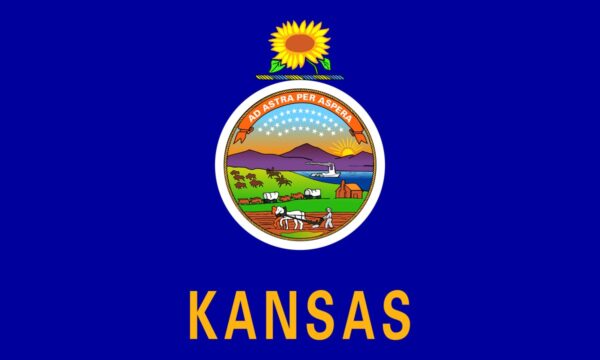In Kansas, various types of unemployment extensions may become available to help unemployed workers. From regular Kansas unemployment benefits to federal Disaster Unemployment Assistance, there are multiple reasons why the state of Kansas may offer a UI extension after your initial UI claim has expired.
Kansas Extended Benefits (EB)
The Extended Benefits (EB) program in Kansas provides an additional 13 weeks of unemployment insurance benefits to those who have exhausted their regular unemployment compensation. This program is only available when Kansas experiences high unemployment rates. It’s designed to help people get by financially while they continue their job search.
To qualify for Extended Benefits, you must have used up all your regular unemployment benefits as well as any federal extensions that might have been in place. Application procedures usually involve filing a new claim or updating an existing one. Similar to regular unemployment benefits, you’ll need to file a weekly claim and meet the work search requirements to continue receiving Extended Benefits, and you must be actively looking for work to remain eligible.
Benefit amounts under the EB program are typically the same as what you received under your regular unemployment claim. However, unlike other special programs, EB is partially funded by the state of Kansas, which means that availability can be subject to budget constraints or legislative action.
Disaster Unemployment Assistance
The Disaster Unemployment Assistance (DUA) program in Kansas provides financial support to individuals who have lost employment or income due to a major disaster declared by the President of the United States.
The program assists those who don’t qualify for regular unemployment benefits, including self-employed workers, farmers, and part-time employees. Once a disaster declaration is made, affected individuals have a limited window, usually 30 days, to file a claim for DUA.
Applicants must show that they were employed or self-employed at the time of the disaster and that their work was interrupted as a direct result of the event. Supporting documents may include proof of employment or self-employment, such as pay stubs, business records, or tax returns. Once approved, the benefit amount is calculated based on federal and state guidelines, similar to regular unemployment compensation.
The program is typically short-term, lasting up to 26 weeks from the date of the disaster declaration. However, the period can be extended depending on the severity of the situation and available federal funds.
The DUA program is managed by the Federal Emergency Management Agency (FEMA) in partnership with the Kansas Department of Employment Security. KDES is responsible for administering DUA and the department releases news updates on eligibility and application procedures following a disaster declaration.
CARES Act – Pandemic Benefits
The CARES Act introduced several unemployment benefit programs to provide financial relief during the COVID-19 pandemic. Programs like Pandemic Emergency Unemployment Compensation (PEUC) and Pandemic Unemployment Assistance (PUA) expanded the safety net for workers who lost their jobs or faced reduced hours. However, all these programs expired on September 4, 2021, ending the additional support they offered.
Pandemic Emergency Unemployment Compensation (PEUC)
PEUC was a federal program that extended unemployment benefits for people who had run out of regular unemployment insurance (UI). The program originally offered an additional 24 weeks of benefits but was later extended to 53 weeks. However, PEUC benefits are no longer available, as the program ended on September 4, 2021.
Pandemic Unemployment Assistance (PUA)
PUA provided financial assistance to workers not usually eligible for regular unemployment benefits, including the self-employed, gig workers, and others affected by COVID-19. The program allowed new claims until October 6, 2021, and could backdate claims to as early as the week ending December 6, 2020. However, PUA benefits also expired on September 4, 2021.
Federal Pandemic Unemployment Compensation (FPUC)
FPUC added a flat rate of $300 per week to the unemployment benefits of all eligible claimants. Originally, this was a $600 weekly addition, but it dropped to $300 during the program’s extension. Like the other programs, FPUC ended on September 4, 2021, and is no longer active.
Mixed Earner Unemployment Compensation (MEUC)
MEUC targeted people with both wage earnings and self-employment income. To be eligible, claimants had to have a minimum of $5,000 in self-employment income in the last taxable year and receive at least $1 from another type of unemployment benefit. Despite its specific eligibility criteria, the MEUC program also ended on September 4, 2021.
Lost Wages Assistance (LWA)
Funded by FEMA, LWA provided an extra $300 per week to eligible unemployment claimants for a limited time. The program covered claims for weeks ending between August 1, 2020, and September 5, 2020. Payments were retroactive but have long since expired.
Now that all these CARES Act programs have expired, those in need of unemployment benefits will need to rely on regular unemployment insurance and any other state or federal programs that may become available. Contact KDOL for more information on upcoming extensions.






Comments are closed.